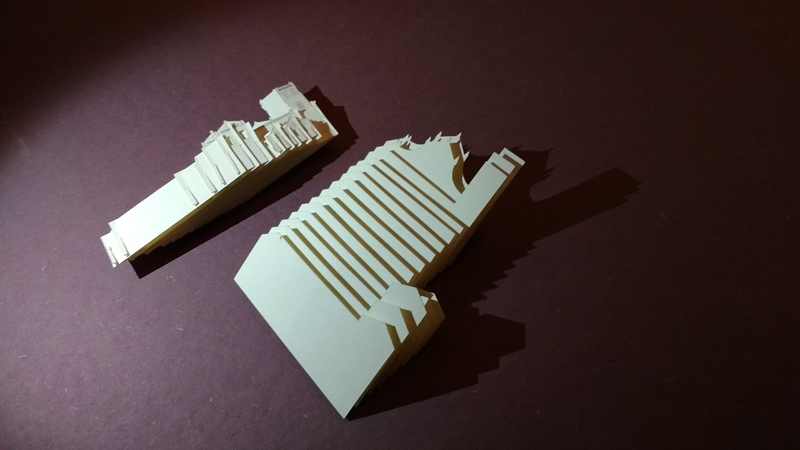Gayatri Kodikal




Grant Period: Over one year and six months
Gayatri Kodikal graduated from the National Institute of Design, Ahmedabad with film and video as specialisations. She has been a practicing moving image artist and her work has been exhibited in various art, film and video festivals in the country in New Delhi, Kolkata and Bengaluru and abroad in Newcastle, Riga, Istanbul, Paris and Oslo. She has been part of various workshops and has contributed to a few collaborative projects in India. Her moving image works typically fall in the liminal spaces between film and video games. She has been working in bits and pieces on the present project since 2010.
In her project titled ‘Ludic Dreaming’ Gayatri wishes to develop a game-art environment based on the speculations surrounding Queen Ketevan’s remains in Goa. Queen Ketevan (c.1560 –1624) was a queen of Kakheti, a kingdom in eastern Georgia. Ketevan effectively surrendered herself as an honorary hostage in a failed attempt to prevent Kakheti from being attacked by the Iranian armies. She was killed at Shiraz, Iran, after prolonged tortures during the rule of Shah Abbas I for refusing to give up the Christian faith and convert to Islam. Parts of her remains were clandestinely taken by the St. Augustine Portuguese Catholic missionaries - eyewitnesses of her martyrdom - to Georgia and buried at the Alaverdi Monastery. The rest of her remains were said to have been secretly transferred to Goa by an unknown traveller and buried at the St. Augustine Church. A Georgian filmmaker, Rezo Tabukashvili, had come to India in 1989 in search of the remains of the queen. The 17th century Augustinian Church, Our Lady of Grace, in Goa, which was a Portuguese colony at that point, is in ruins now. The story is not very well documented and thinly scattered all over the world. The most complete one among these is a book by the Armenian historian Roberto Gulbenkian, which pieces together the whole set of events into a seemingly coherent narrative, which later triggered Rezo Tabukashvili’s curiosity. Following his investigations, the Archeological Survey of India had spent 20 years excavating this ruined church and among the remains, bone fragments of a hand, which is believed to be that of the queen, has been found. Analysis of Mitochondrial DNA at the Centre for Cellular and Molecular Biology, Hyderabad, near conclusively proved that the remains may have been that of the queen. After ASI took over, Rezo returned to Georgia and died of a fatal illness in 1990; so he never got to know the results of the dig. There’s a reference to the myth of a female ghost in the title song of the popular Hindi film Gumnaam (1976) which was shot on the same location.
Working on this theme Gayatri wants to create a ‘physical interactive installation, in a controlled space; something that combines elements of a traditional board game and an interactive screen game’. She started this project thinking she’ll make a film on this story. However, the more she researched, the more it grew beyond the filmic medium. She points out that the span of the story over many centuries and the continuously shifting geographical locations creates a very complex web of speculations, myths and historical facts that cannot be represented in a film. Even the most non-narrative, non-linear of films has to be watched in a linear fashion which would be a problem here experientially. Questions of a specific way of industrial film making and the structures of the nation-state play a deeper role in keeping it that way. The digital media however opens up a lot of possibilities beyond this and allows the kind of layered complexities she wishes to address through the project.
She wants to present her work by taking advantage of the multiplicity and ambiguity that the medium of the video games allow, but pushes it a little further by proposing an offline, real life version of the experience in the form of an installation. That way this project lies in the intersections of film, video games and board games. The complete structure of the game is sketchy at this point and will emerge through the project. However, she wants to incorporate elements like fragments of films, maps, video projections, lo-fi devices and text cards into the game. Since the game is not a goal oriented one, typical of video games, it will open up possibilities of various relationships between historical narratives and the logic of gameplay.
Gayatri’s project can be located in the newly emerging practice of Art-Games. All over the world artists are pushing boundaries of various media to incorporate interactivity and explore the possibilities that video/digital games allow. Some filmmakers have tried to use these devices in their films; alternatively media artists have tried to explore the idea of goal-less games in their work. This project pushes the boundaries of those art forms. It also raises deeper questions about the use of archives in art and on the legitimacy of ‘proof’ and ‘evidence’ in history and thereby historiography. By situating the game in a controlled space like the gallery, she is also challenging the limits of online fantasy worlds and real spaces.
This grant was made possible with support from Tata Steel Limited.
